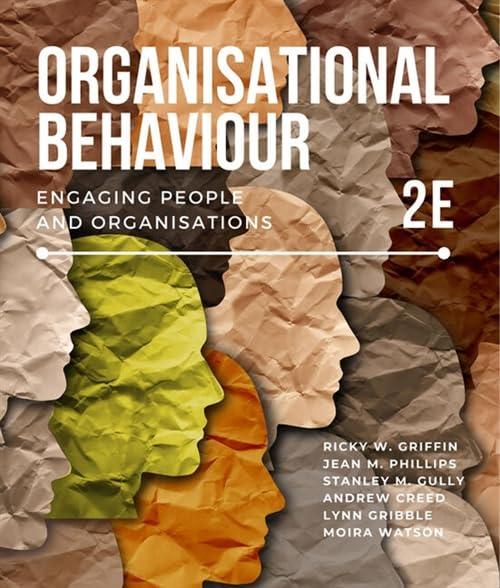In 2018, the largest ever survey of machine ethics was published in the top ranked science journal
Question:
In 2018, the largest ever survey of machine ethics was published in the top ranked science journal in the world, Nature.67 Massachusetts Institute of Technology (MIT) conducted a survey of 2.3 million people from around the world to underpin the report. Over 18 months, the online quiz gathered 40 million decisions from individuals in over 200 countries. The survey was called ‘The Moral Machine’. The crux of the issue was the dilemma of having to program autonomous vehicles with the morally correct decisions in difficult transport scenarios. For instance, who should die when a car is poised to crash into pedestrians or other vehicles? Are the people in the autonomous vehicles to be protected at all costs, or are the people external to the vehicle to have their lives prioritised? Early on in the project, an ethical paradox emerged. People were saying they wanted a self-driving vehicle to protect pedestrians even if it meant sacrificing its passengers; however, the survey results indicated they wouldn’t buy self-driving vehicles programmed to act this way. Overall, there were variations in the priorities people gave according to the part of the world in which they were based. The authors speculate this may be a result of embedded cultural and values-based factors. There also appeared to be sociopolitical factors involved; for instance, people in countries with stronger governments and social institutions were more inclined to allow people crossing the road illegally to become the victims in the scenarios. With Toyota, Tesla, Audi, Mercedes, Waymo and Uber among the companies working intensely in driverless technology, the stakes are high and the interest in morally correct programming will flow through in organisational as well as individual decisions.
Questions
Imagine you have the task of programming an automated car to respond in an inevitable crash situation. The car must either kill a pedestrian, or swerve and crash, thus killing the passengers within the car.
1. Discuss what you would choose to do and compare your choice with that of your friends and family members.
2. Narrow down the factors that would enable you to diminish the value of the life of one person over another; or perhaps you can innovate for an alternative solution to the dilemma?
Step by Step Answer:

Organisational Behaviour Engaging People And Organisations
ISBN: 272389
2nd Edition
Authors: Ricky W. Griffin, Jean M. Phillips, Stanley M. Gully, Andrew Creed, Lynn Gribble, Moira Watson





